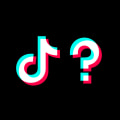In the modern West, pop culture refers to cultural products such as music, art, literature, fashion, dance, film, cyberculture, television and radio that are consumed by the majority of the population of a society. Popular culture is those types of media that have massive accessibility and appeal. ENTERTAINMENT AND CELEBRITY NEWS, INTERVIEWS, PHOTOS AND VIDEOS FROM TODAY. The term pop culture is used a lot, but do you know what it really means? Pop culture refers to popular culture that is aimed at the younger generation and is transmitted through the media.
Popular culture is essentially a set of beliefs, values, actions, objects or goods and practices that are popular at any time and space in society. It can refer to things like art, literature, fashion, dance, movies, television, magazines and ways of life, to name a few. examples of pop culture can be found in language, art, cinema and, in particular, music. This can include 40 pop music, young adult fiction such as Harry Potter, and fleeting pop culture trends, such as flash mobs and clothing styles.
The opposite is the alternative culture or subculture, which is a culture practiced by groups of people but that has not reached the masses. Occasionally, elements of the subculture break through and briefly become popular culture, such as the rise of pop punk bands in the late 1990s and early 2000s. Boy bands have achieved popularity in waves. An earlier wave of boy bands in the 1960s and 70s saw bands like The Monkeys and The Beach Boys rise in popularity.
A central feature of boy bands is that they are given a fun pop image designed to attract a wide audience. They often have choreographed dance movements and are mainly vocalists. They are usually young teens or boys in their 20s who sing love songs to girls. Rock music rose to prominence in the 1960s and 1970s and has enjoyed significant popular success intermittently ever since.
Similar British rock bands such as The Rolling Stones, The Kinks and The Who also achieved worldwide fame in the mid-1960s, and before long this group of artists received the nickname “bands of the British invasion” in the United States. Every few years, a children's collector's item bursts into the popular spirit of the time. A popular example throughout history are the Pogs, which began as collectible milk tapas in the 1920s. In the 1990s, they were distributed in McDonald's happy meals.
Dance styles gain popularity in various cultures at different times. In the United States, in the 1950s, the swing dance style was very popular. In the 1990s, with the popularity of grunge music, mosh-pits became popular. This was followed by the rise of rave culture and electronic dance music, which also involved a somewhat unstructured leap to music.
Flash mobs became a very popular part of Western culture in 2003 and remained prominent for about 3 years. The spread of punk peaked with the appearance of megabands of pop punk in the 1990s. The epitome of this was the band Green Day. Many older punks used the phrase “pop punk” as a term to mock punk music, which had “sold” to corporate interests in order to enjoy popular fame.
The heyday of sitcoms was in the 1990s. During this era, comedies (“sitcoms”) appeared on television every night and united a nation. The music of the top 40 is one of the most prominent ways in which pop culture can be identified. Each year's top 40 charts are commemorated online to help people reflect on what music captured the spirit of the year.
Often, music that is in the top 40 is called “charts” to show that this music is the music of the masses. A very popular video game series from the 1980s and 1990s was the Mario series. To this day, people dress up as characters from video games such as Mario, Toad and Princess for cosplay events. While the folkloric element of popular culture has a strong relationship with the commercial element, public communities have their own tastes and may not always accept all cultural or subcultural items sold.
When young adult books become extremely popular, they enter pop culture through media and derivative products, such as cartoons, franchised movies, and action figures. Cosplay is a form of dressing up (it's an acronym for “dress up game”) in which people dress up like various characters from popular culture. Pop is specific to something that contains qualities of mass appeal, while popular refers to what has gained popularity, regardless of style. The challenges that became big enough even involved the participation of prime ministers and politicians hoping to harness the popular spirit of the time.
The quantifiable definition of culture has the problem that much of “high culture”, such as Jane Austen's television dramatisations, is also “popular”. Progressive rock became popular and saw different bands and solo artists create chaos through this genre. Grammy-winning artist Alicia Keys talks about her first Christmas album, “Santa Baby”, and performs “Please Come Home for Christmas” as part of Citi's musical series on HOY. In addition, even Netflix series such as Tiger King can become popular enough to be considered popular culture.
Nowadays, manga is still popular among young people, and many Western Saturday morning cartoons are created with this artistic style. Popular capitalist culture, as Adorno argued, was not an authentic culture of the people, but a system of homogeneous and standardized products manufactured in the service of capitalist domination by the elite. Based on the author of Cultural Theory and Popular Culture named John Storey, popular culture has different definitions. In other parts of the world, other sports have gained prominence and are reflected in the popular spirit of the time.
However, this type of popular culture can be dangerous, as it has begun to have a negative impact on adolescents in their most formative years. In addition to these, there are many other popular events and things that happened and were introduced in the 1960s, including science and technology, sports, fashion, television, dance and news. . .


